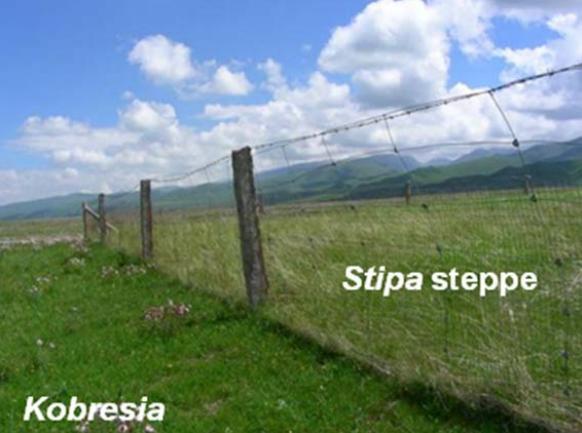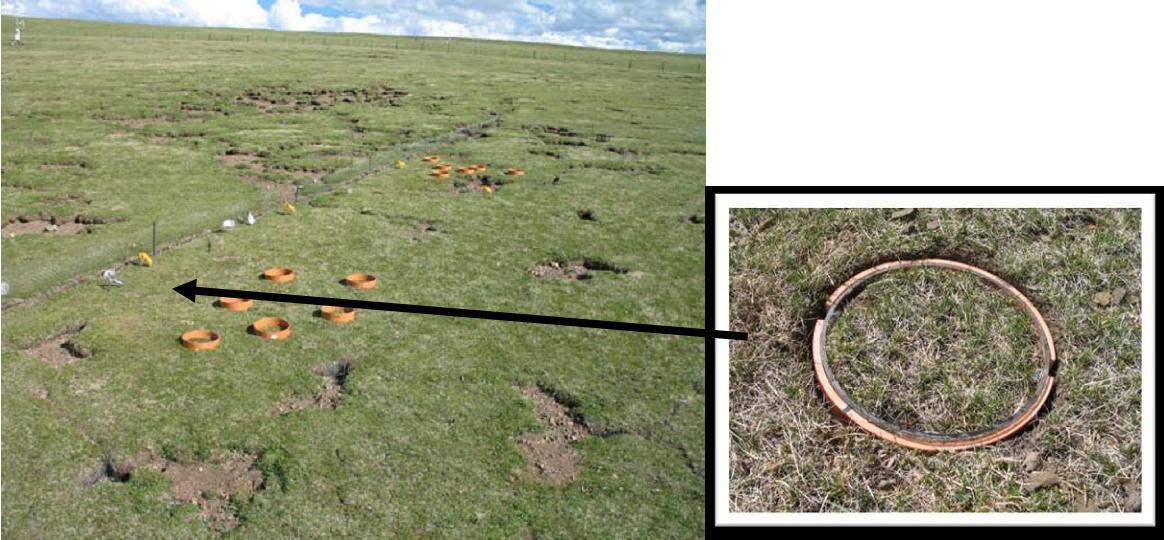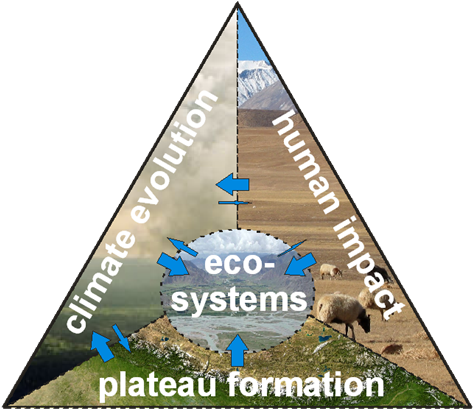The Making of a Tibetan Landscape: Identification of Parameters, Actors and Dynamics of the Kobresia pygmaea Pastoral Ecosystems:
Vegetation Dynamics, Bio-mass Allocation and Water Consumption of Kobresia as a Function of Grazing and Environmental Conditions
DFG MI 338/7-2; WE 2601/4-2; LE 762/12-2 (SPP1372)
From 04/2008Principal Investigator: Georg Miehe, Karsten Wesche, Christoph Leuschner
Staff: Yongping Yang, Heinz Coners, Elke Seeber, Sandra Willinghöfer
The Kobresia pygmaea pastures are the world's largest 'alpine' ecosystem extending over 450 000 km² in the south-eastern Tibetan highlands. The golf course-like mats are supposed to effect the monsoon circulation through radiation feedback, they protect the headwaters of large rivers against erosion, and provide resources for the local pastoralists.

The ecosystem is widely believed to be natural, but results from surveys, grazing exclosures and palaeo-ecological studies lead to the new hypothesis that the Kobresia pygmaea ecosystem is a human-made environment. Livestock grazing causes the pre-dominance of species which have their main above-ground biomass below the grazing reach of livestock; soil-dwelling mammals profit from the vegetation structure and stabilise the status quo. Matter and energy fluxes are thus controlled by livestock and small mammals. We propose to test these hypotheses and their potential implications in factorial grazing experiments (livestock + pika excluded / only livestock excluded / only pika excluded / no exclosure) at the research station Kema in the core area of the ecosystem. A network of 29 grazing exclosures covering a south-north transect of 1400 km is used for upscaling and supplements these data. Our objective is an assessment of grazing impact on vegetation dynamics, biomass allocation and water consumption. This application contains 2 modules being part of a closely integrated project of 4 modules (soil ecology, satellite supported mapping of grazing impact). Further modules (atmosphere observation & modelling, energy & gas fluxes, glacier dynamics) are connected within the framework of a common atmospheric-ecosystem-glacier project within TIP. The project continues cooperation with the Northwest Institute of Plateau Biology Xining, CAS, the Tibet University Lhasa, and the Yunnan University, Kunming.

The Kobresia pasture inside the fenced study area with the rings for soil respiration measurement (group Guggenberger/Kuzyakov) and the (nearly invisible) lysimeters (arrow). Due to the compact structure of the Kobresia mat, the installation works resulted in no visible damage to the surrounding pasture
vegetation (Photo H. Coners).
List of publications of this Project
| Miehe, G; Miehe, S; Bach, K; Nölling, J; Hanspach, J; Reudenbach, C; Kaiser, K; Wesche, K; Mosbrugger, V; Yang, Y; Ma, Y: Plant communities of central Tibetan pastures in the Alpine Steppe / Kobresia pygmaea ecotone, Journal of Arid Environments, 75(8), 711-723 (2011) |
| Miehe, G; Miehe, S; Bach, K; Kluge, J; Wesche, K; Yang, Y; Liu, J: Ecological stability during LGM and mid-Holocene in an arid alpine biome indifferent to environmental changes? The Alpine Steppes of the Tibetan highlands., Quaternary Research (2011) |
| Miehe, G; Miehe, S; Bach, K; Kluge, J; Yang, Y; Duo, La; Co, Sonam; Wesche, K: Alpine Steppe Plant Communities of the Tibetan highlands, Applied Vegetation Science, 14, 547-560 (2011) |
Related links:
- Experiment: KEMA 2010: Interdisciplinary Atmosphere Ecosystem Experiment in Kema, Tibetan Plateau
- Experiment: Xinghai 2009: Grazing Exclusion Experiment Xinghai, Tibetan Plateau
- Experiment: Xinghai and Kema 2011: Comparative Fertilisation Experiment in the montane belt (Xinghai) and alpine belt (Kema), Tibetan Plateau
- Field site: Kema: Kobresia Ecosystem Monitoring Area (KEMA) and Naqu Ecological and Environemental Observation and Research Station
- Field site: Xinghai: Xinghai longterm Vegetation Monitoring Site

